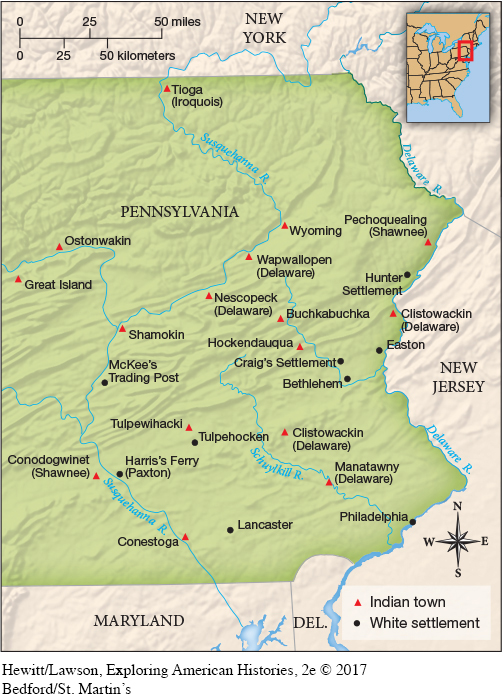Increasing Diversity
Population growth and economic divisions were accompanied by increased diversity in the North American colonies. Indentured servants arrived from Ireland, Scotland, and Germany as well as England. Africans were imported in growing numbers and entered a more highly structured system of slavery, whether laboring on southern farms, on northern estates, or in seaport cities. In addition, free families and redemptioners from Ireland, Scotland, the German states, and Sweden came in ever-larger numbers and developed their own communities and cultural institutions. There were also more colonists who had spent time in the Caribbean before settling on the mainland, and the frontiers of British North America were filled with American Indians and French and Spanish settlers as well as European immigrants.

As the booming population demanded more land, colonists pushed westward to find territory that either was not claimed by others or could be purchased. At the beginning of the eighteenth century, German and Scots-Irish immigrants joined Anglo-American settlers in rural areas of New Jersey, Pennsylvania, and Delaware. Many immigrants to Pennsylvania settled in areas like Shamokin that were dotted with Iroquois, Algonquian, and Siouan towns and negotiated with Indians to obtain farmland. At the same time, Delaware and Shawnee groups, who were pushed out of New Jersey and the Ohio Valley by pressure from settlers, also moved into Pennsylvania. They negotiated with colonists, the colonial government, and other Indian groups to establish communities for themselves. All along the Pennsylvania frontier, the lines between Indian and immigrant settlements blurred. Still, many communities prospered in the region, with white settlers exchanging European and colonial trade goods for access to Indian-controlled orchards, waterways, and lands (Map 4.1).
In the 1720s and 1730s, however, Scots-Irish settlers flooded into Pennsylvania when bad harvests and high rents caused them to flee oppressive conditions back home. The new immigrants overwhelmed native communities that had welcomed earlier settlers. The death of William Penn in 1718 exacerbated the situation as his sons and closest advisers struggled to gain control over the colony. Indians were increasingly pushed to the margins as growing numbers of European settlers moved into frontier territories.
Exploring American HistoriesPrinted Page 118
Exploring American Histories Value EditionPrinted Page 90
Chapter Timeline